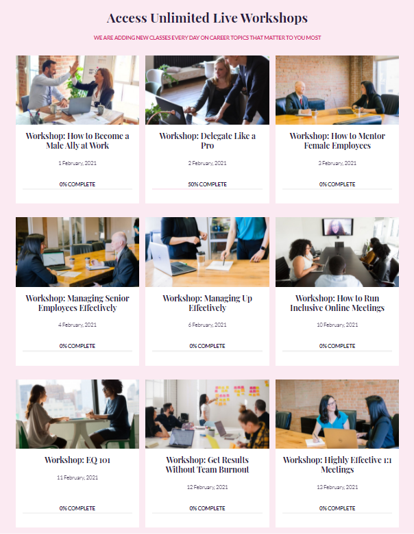My friend shared this personal anecdote recently on social media.
Her 5-year-old daughter was in her music school’s zoom class one morning.
The instructor was
teaching them a way to remember the notes scale EGBDF – ‘Every Good Boy Does
Fine’. He asked if she understood.
She said, “No, I don’t understand because every good girl
does fine too!”
Aside from the young
lady's display of wit and smartness, it made me wonder what she must have felt
during this interaction. Perhaps a sense of wonder, or confusion, or both. It
also made me question why the music instructor would choose this mnemonic for treble
clef lines instead of something else. And the answer is fairly simple –
humans tend
to fall into patterns of behavior. In training, that means we teach things the
same way as they have always been taught. It may be comfortable and used widely;
however, it results in a rigid curriculum or method of instruction that may no
longer be inclusive.
So while Wikipedia explains the mnemonic as
Every Good Boy Deserves Fruit with Fruit sometimes
being replaced by Favour, Fudge, or Football, many other
inclusive and gender-neutral options are available. Some examples are Elephant’s
Got Big Dirty Feet, Every Green Bus Drives Fast, Every Good Bear Deserves Fish,
or Every Good Burger Deserves Fries. Okay, maybe children thinking of burgers and
fries while in music class may not be ideal, but you get the point.
In the corporate
world,
sometimes inclusion and accessibility take a back
seat when it comes to employee training and development. Organizations need to make
sure that they do not fall into patterns of behavior and forget about making their
training programs inclusive.
Turn to PIVOT - our platform for virtual, instructor-led career training.
Get unlimited access to live professional development classes and learn how to communicate assertively, overcome imposter syndrome, lead effective virtual meetings, and delegate like a pro. Learn the skills you need to succeed at the workplace, when you need it.
Ensure that all employees can access the training regardless of socioeconomic status. For example: if introducing a company-wide online training, consider accessibility for non-office staff (shop employees, field personnel etc.) who may not have access to a dedicated computer or access to the internet to take the training. Make provisions to ensure there are enough shared workstations for the shop floor staff to reasonably access the training. Consider extending the deadline for those field staff on rotation who may be on days off or may not have access to the internet while they are on field location.
Another thing to consider is that training is not quite inclusive if people can’t access it from different devices. Make sure your training is compatible with multiple platforms and devices.
Think about diversifying your methods of content delivery. Employee training is not a ‘one size fits all’ solution. Not all people learn the same way, making it imperative for organizations to utilize different modalities to offer training – recorded videos, live webinars, or an instructor-led course with an online attestation.
An alternative practice for non-office staff is scheduling a ‘learning hour’ when training or webinar is screened in the common area on the big screen.
'Building an inclusive training program shouldn’t be an afterthought.'
When using visual images to support training content, ensure that the photos are representative of all cultures and truly reflect your organization’s diversity and inclusion mission. People are likely to engage and interact with content when they can see a part of themselves reflected in it.'
If a panel discussion or a roundtable follows the training, invite a varied representation in the panel members, where diverse populations can speak to the discussion topics from their unique perspectives.
When designing training programs for inclusivity, in addition to race and gender, keep in mind other areas of acquired diversity such as educational background, linguistic makeup, and socioeconomic status, amongst other things. Keep training content as simple as possible, with simple language, short sentences, a user-friendly tone, and easy to relate references.
An example is teaching employees to use a free text reader like the Read&Write extension for Google Chrome or a voice-to-text tool like Dictate in Microsoft office. Employees may choose not to use them, but they are a good option for those who retain training instruction better when they hear it or those who have a disability that interferes with writing or typing.
Offer flexibility and create self-paced learning opportunities to include all employees in your organization’s training program, irrespective of their personal and professional schedule. For example, make recordings available for those who are unable to join live presentations.
Virtual instructor-led training (VILT) is another excellent, cost-effective way to offer the benefits of a classroom experience to teams that are not co-located.
Pivot e-learning by
Pinkcareers offers virtual, instructor-led, live career training in a flexible format that promotes self paced learning. Find more details at
PIVOT E-Learning Membership page.Making your employee training program inclusive to all is not the same as offering inclusivity training. It is about ensuring that the diversity of the people we want to teach is considered in the training program's design. An inclusive training program aims to eliminate any barriers that would prevent your employees from reaching their full potential.
Training that provides a welcoming and accessible learning environment will encourage employees to be more personally accountable to their training & development. Engage your workforce through inclusive training and employee-centric learning & development initiatives to reinforce a diverse and inclusive culture in the process.
What other options have you introduced to make your organization’s training program more inclusive?
Drag to resize
Eeksha Kohli is a global HR professional, with experience across Oil & Gas, Energy, Technology, and Manufacturing environments. In the last 13 years, she has developed expertise in Talent Development, Compensation Management, Employee relations, and HR Project Management.
Eeksha is the Program Director at Pinkcareers. She is passionate about helping individuals take their careers to the next level. She designs and facilitates career development programs and custom D&I workshops at Pinkcareers.
Eeksha has worked in India, Singapore, US, and Canada and is currently based out of Edmonton, Alberta. In her free time, she enjoys taking road trips and exploring the Canadian outdoors with her husband and two young kids.
Drag to resize
Turn to PIVOT - our platform for virtual, instructor-led career training.
Get unlimited access to live professional development classes and learn how to communicate assertively, overcome imposter syndrome, lead effective virtual meetings, and delegate like a pro. Learn the skills you need to succeed at the workplace, when you need it.




